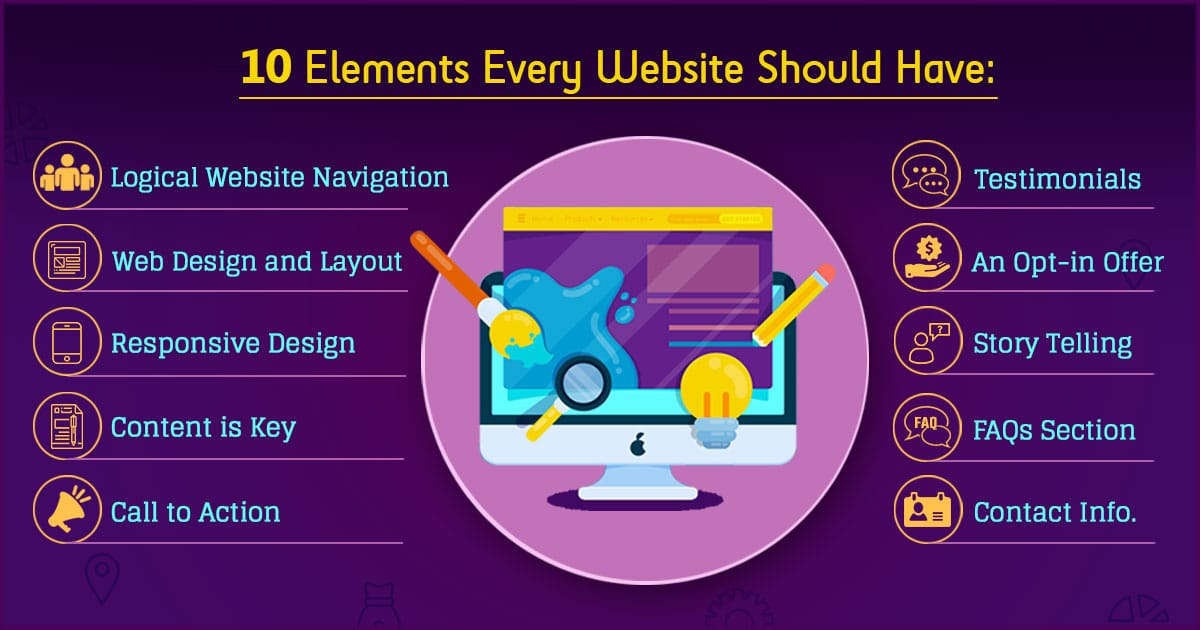The Guide To Relaunching Your Business in 2020
COVID-19 has shaken up pretty much every aspect of our lives. And if you are an entrepreneur, chances are the pandemic is impacting you in especially challenging ways. Which is why you might be considering how you can adapt and go about relaunching your business.

Let’s take a look at how relaunching your business in 2020, can open up new possibilities for you to thrive and grow.
How to rebrand your business
In order to make sure that your rebranding is successful, you will have to pay attention to these areas:
- Reestablishing the audience and market
- Redefining your company vision, mission and values
- Renaming your company (if that is something you are looking to do)
- Rethink your slogan
- Rebuild your identity
Reestablishing the audience and market
One thing that you would need to really look into is whether or not your audience is still the same. In order to evaluate this, you can try conducting market research and also use focus groups and surveys, along with data analysis. Another factor to consider is if your competitors have changed. Look at who is buying from you and who people seem to be buying from instead of from you. Once you have an idea of both of these things you can approach rebranding your company with your actual audience and competitors in mind.
Redefine the vision, mission and values of your brand
Ask yourself 3 important questions;
- What are you doing?
- How are you doing this?
- Why are you doing this?
Vision
Set out the vision before anything else. This is especially important as your vision may have changed to suit the climate of 2020. Perhaps safety is a new component that you wish to add to it. When you know what your vision is clearly, it will make it easier for you to rebrand everything from website design to your marketing campaigns.
Mission
The mission that you plan out will serve as the roadmap for your business. If your mission changes, then your messaging will also change. For instance the Sweetgreen brand has this mission statement: “To inspire healthier communities by connecting people to real food”. Based on this statement the brand is able to define how to represent themselves.
Values
As you rebrand, some of the core values that you held initially would need a little change too. You may not be able to sustain them, or you may have to add new ones. Make sure that your values reflect the current position of your company as you’re working towards relaunching your business.
Renaming your brand
If you are thinking about changing your company name, make sure you factor in all the costs. A change in name can cost you your brand recognition and your organic search traffic could come down like a house of cards. So, if you think your current brand name could still work – keep it. But if it conflicts with your new company identity, start working on new names. Just be sure to have a transition plan in mind if you are going to rename your brand. For this, you can look along the lines of these ideas;
- Make a new word (coining)
- Use an old word, but give it a fresh twist
- Just say exactly what you do
- Modify the spellings of a word – for example YOUnique.
- You can also add a prefix or a suffix
- You can use other languages (make sure its not too hard to remember or pronounce)
- Bring two words together
- Think of an acronym
Reconsider the slogan of your brand
A good slogan is one that is catchy and will also embody the vision and the mission of your brand. The repetition of your slogan basically builds the brand recognition, which is why you need to think this out carefully – just like the renaming component. You can use focus groups to see if the slogan that you have picked out seems to resonate. A few ideas for you to get started on making that slogan are:
- Make a claim
- Use a metaphor or get metaphorical
- Using poetic or artistic language
- Give instructions
- Leverage labels that suit you
- Compliment your customers
Rebuild your brand identity
When you think about rebuilding your brand identity you must think of your logo, colour palettes and new brand guidelines.
The logo
Maybe you feel that your customers never really connected with your loo, or perhaps the rebranding needs a new logo too. When you’re realunching your business, you need think of basic building blocks for a strong and memorable logo.
- Keep it simple. Be creative but don’t push in so much symbolism into it, that it becomes confusing.
- Make it impactful. Being simple does not mean staying timid. Make a bold impact. Stand out. Fonts and colors can play a major role here.
- Stay adaptable. Think about shapes and styles that will be versatile enough for the various channels that your customers will use. This needs to factor in during redesigning your logo.
- Think long term. You don’t want to be rebranding each year so when you pick your logo you must make sure that you can use it in the long term and that it sits well with your vision, mission, values and the purpose.
- Try to maintain some sense of through-lines. One of the most remembered things about your brand will be your logo. You can try to avoid losing too much brand recognition by keeping some of the components of the old logo that you thought resonated well.
Picking a new colour palette
Colour can also have a massive impact on your brand. Some brands actually come to be synonymous with colours like Burger King, Pizza Hut or McDonalds. Use colour psychology coupled with competitor research to understand and evaluate what color palettes will work.
Fonts and typography
Your fonts will also speak a lot about your brand (scroll back up to the logos from Zara and The Knot). Choose clear, easily readable and impactful fonts. They should also be easily accessible. Also make sure that the font matches your market.
If you want in-detail guidelines on logo designing you can also read our blog here to find out how you can perfect your brand logo.
From rebranding to relaunching your business
Start building your website, online presence and marketing collateral
The most important communication tool that you have is your website. It will help you stay in touch with current or future customers. When you plan on relaunching your website and your online presence has to be spot on.
What should a good website have?

- User-friendly website navigation – your customers should be able to navigate easily. Everything must be clear and not cluttered. The page loading times should not be slow either.
- Web design and layout – you should first research into seeing what the perfect user experience needs to look like. Use customizations, animations, pop-ups, and humorous interactions as well as the right font to give your customer something that they will like and recommend.
- Responsiveness – it is highly likely that your customers will browse using their mobiles or tabs or other devices. Your website has to work well across all these devices seamlessly.
- Targeted content – the content on your website should not be taken lightly. It should include the right keyword mapping, SEO and also terminologies that your audience will be familiar with. It will help them connect better.
- CTA – there must be call to action statements on your website where the customer can spot them clearly. These CTAs will come in handy for you to guide customers to buy, get discounts or subscribe for example.
- Testimonials – almost every website that you come across today will have these and with good reason. It is important for your buyers to know that others like them ave bought from you and liked the experience. It helps create a strong brand image.
- Opt-in offers – this is something that is sent in asking customers to sign up to receive your promotional emails and details. This way, even if they may not have bought from you, you would still have their details and can promote to them going forward.
- Story-telling – if you want your audience to feel connected to your brand, tell the backstory of how you got to where you are today.
- FAQs – answer all the important questions that you think customers would have, so that it helps them buy easier from you.
- Contact information – it is essential that you include accurate and detailed information on how customers can contact you.
Building your online presence
Your online presence is something that you will have to work on at the same time that you take on doing up your website. Social media is the best way to establish this presence and today, the majority of shoppers rely on social media for their purchases. You can take a look at the following platforms and pick the ones that suit your business the most when relaunching your business:
- YouTube
How can you pick the platforms that suit you the best? Well, here are a few steps to get you there.
- What is the nature of your business? Basically, think whether you are B2B or B2C. If you are B2C, Facebook and Instagram will be the best for you to gain interaction and visibility. If you are B2B LinkedIn will help you target the potential customers. You should maintain a YouTube channel regardless of the nature of your business.
- Focus on your target audience. You cannot afford to fail right? Then make sure that your advertising budget is at work completely. Focus on who your target audience is and put in the research to pinpoint this. It will point you to the right social media platform.
- Consider the client demographics as well. Are your customers old, young, male or female prominently? When you analyze the demographics of your client base you will automatically know which social media platforms to use.
- Research your competition. Look at what they post and where they post it. Then see which platforms seem to be giving them the most amount of interaction. Not only can you get some inspiration, but you will also be able to understand where you can get interaction as well.
There are a lot of aspects to building your online presence and offline presence both when you think about rebranding and relaunching your business. The most important one is that you stay flexible and realistic through the process, given that this year has turned out to be a challenging one. But with some research, and investment in a few resources, you’ll be ready to tackle rebranding and relaunching in 2020.

